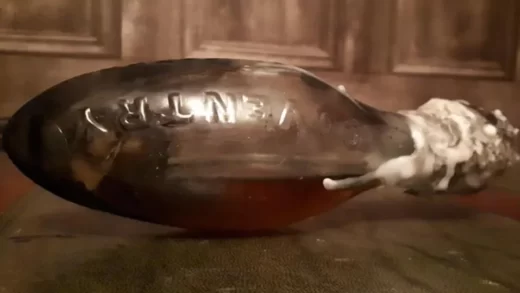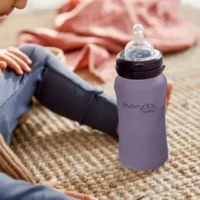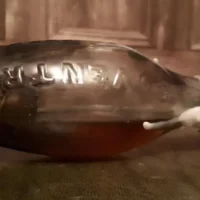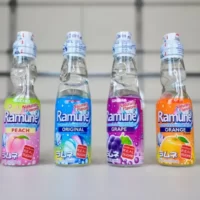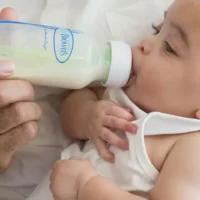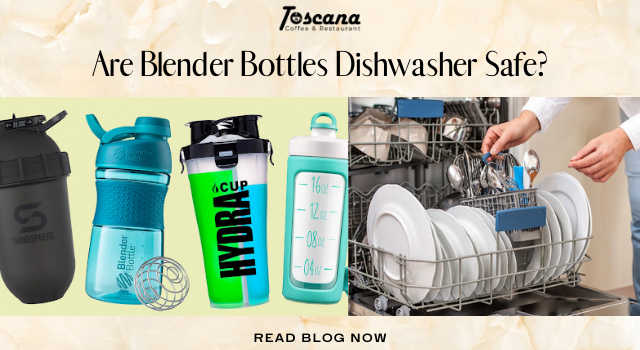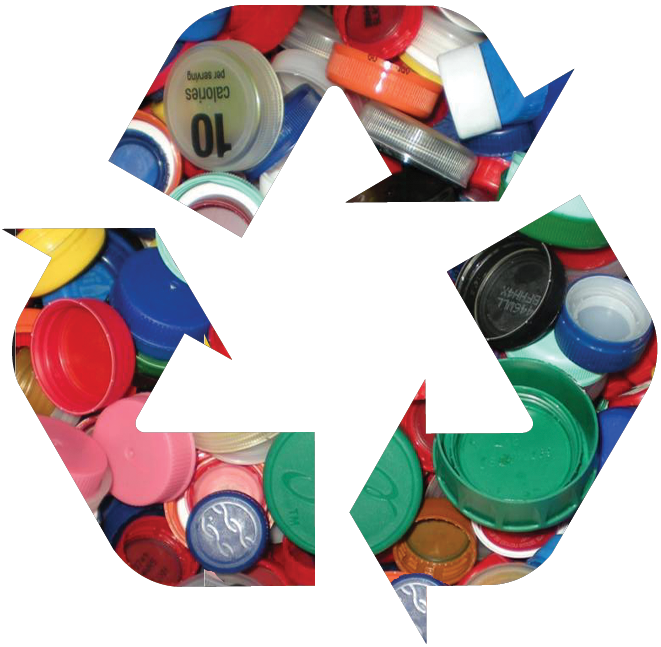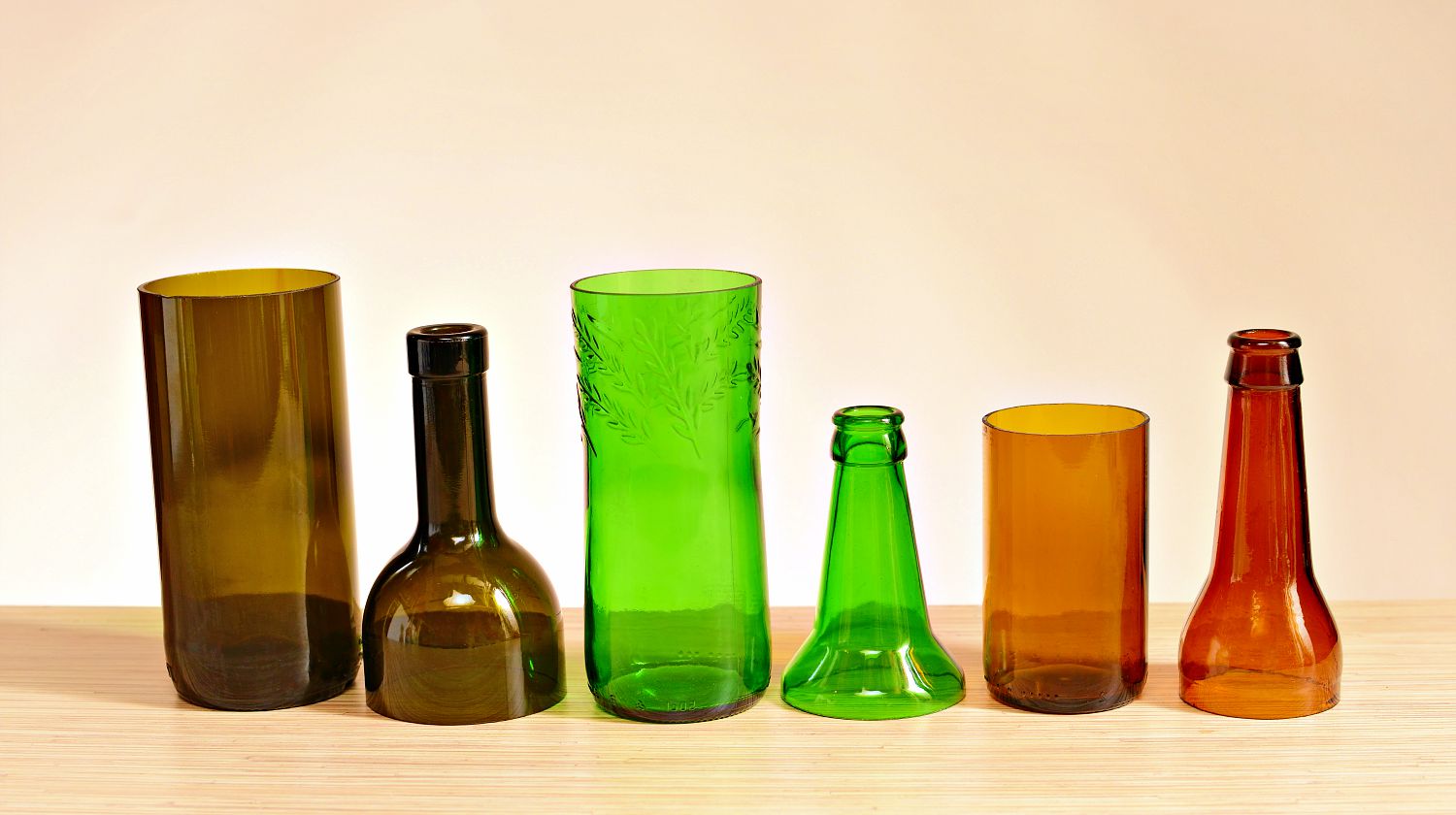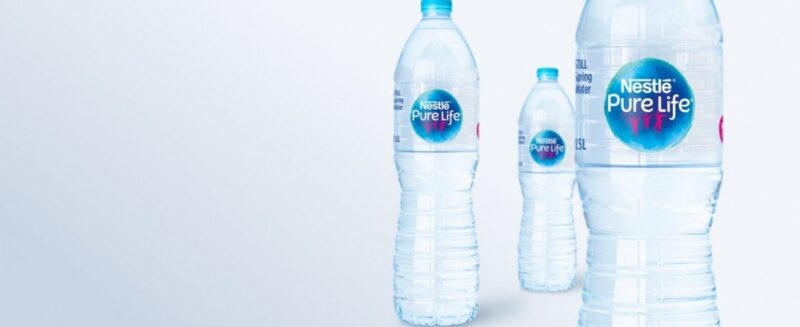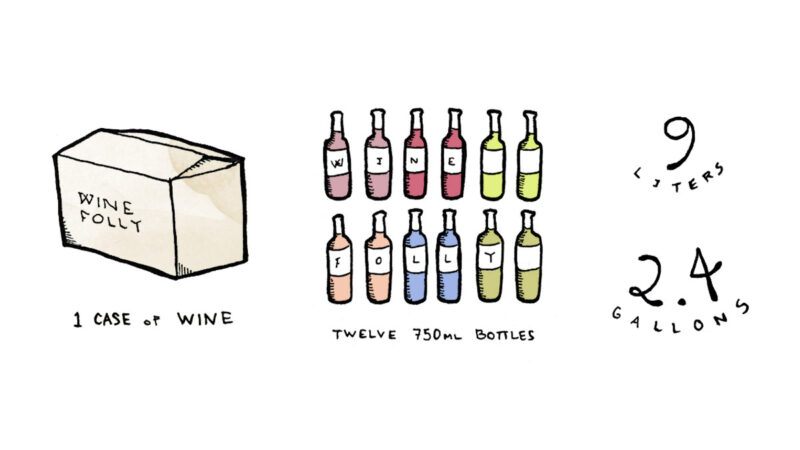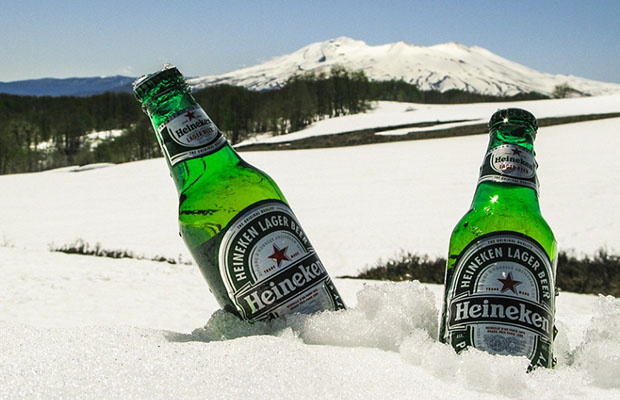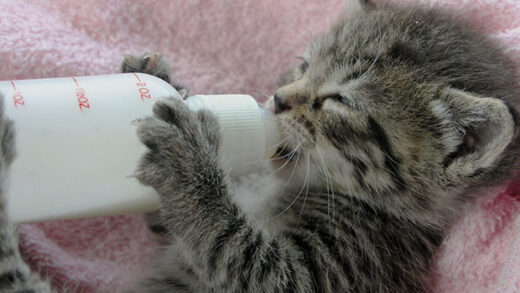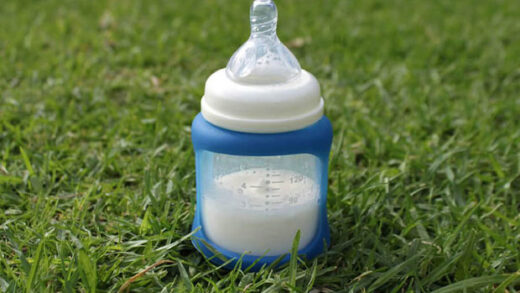In terms of taking a bottle, breastfed babies can be picky. They are not entirely to blame: after weeks of getting the good stuff fresh from a warm, snuggly source, it must be shocking to open your mouth for a meal and find a whole new delivery system in place. We understand, but how to get a breastfed baby to take a bottle?
To make sure your milk supply is established, wait until 3 to 4 weeks after giving birth. If at all possible, have someone else try the initial few times. Try adjusting the bottle and nipple temperatures, moving around, and changing positions if your baby isn’t taking the bottle.
We hope it’s simple for you, but if it’s difficult, try the advice below.
Table of Contents
Why Won’t My Baby Drink From A Bottle?
I’ll start by saying that it’s unlikely that they are having trouble latching or understanding how the device works. Actually, latching onto you is harder than sucking from a bottle. A breastfed infant who rejects the bottle is probably doing so because:
- The artificial nipple sensation in their mouth is unpleasant because it is so unfamiliar to them.
- Associate eating so strongly with you that they don’t understand or want the bottle substitute
- Have had a negative experience with taking the bottle (least likely)
Of course, any of the three of them could be the case. It’s the OT in me, but I place a lot of importance on discovering the “why” behind a problem because doing so frequently provides clear guidance on “how” to solve it. So, while you promise me that you won’t worry too much about figuring this out, let’s talk about a few red flags for each of the reasons mentioned above.
Tips To Get A Breastfed Baby Take To A Bottle
1. Time It Right
Around four weeks of age is a good time to introduce a bottle to your infant. Wait until your body and your baby have become accustomed to breastfeeding, which takes three to four weeks. If you’re returning to work, start your child on a bottle at least two weeks beforehand to give you both enough time to adjust.
2. Quiet Please
It can be very helpful to go somewhere serene, unobtrusive, and quiet. Have them go to this spot for a while and rock or sway your baby for a while so they are nice and relaxed before someone tries to give your baby a bottle. The bottle can be presented with a gentle and calm demeanor. My third child benefited greatly from this crucial tip. With two older brothers, our house was already quite noisy and chaotic when he arrived. I had taken this for granted because our noisy home was the norm, and I reasoned that a young child wouldn’t be bothered by it.
3. Offer A Bottle After You’ve Nursed
It’s crucial to get your baby used to the bottle’s nipple because drinking from a bottle requires different types of sucking. The best time to give your baby a very small amount of milk (one ounce or less) in a bottle is when they are relaxed and content, which could be right after a morning breastfeeding session. Play with the nipple and let your infant get used to it. To get your baby to taste and latch on for more, try dipping the nipple in breast milk.
4. Choose A Breastfeeding-friendly Bottle
Your baby’s acceptance of the bottle and nipple you choose can depend greatly on both. You want one that as closely resembles breastfeeding as possible. Try the acclaimed Munchkin LATCH bottle, which is made to mimic breastfeeding for infants who alternate between breastfeeding and bottle feeding. Since it releases the milk at the same rate as the breast, a slow-flow nipple is necessary because it won’t overwhelm your baby with milk.
5. Give The Job To Someone Else
If the mom is feeding the baby, sometimes only the original source will do. Your baby is aware of your scent and won’t understand why a bottle is being offered in place of breastfeeding. Let your partner or another caregiver handle the situation instead of you. When the feeding is finished, go for a walk or run some errands to get outside.
6. Feed On Cue
Similar to breastfeeding, it’s crucial to avoid giving your baby a bottle when they are in extreme need of one. Unlike adults, who will eat anything when they’re hungry, babies are frequently pickier and more challenging to feed. At the first sign that your baby is hungry, keep an eye out for hunger cues and have a bottle ready. To pique your baby’s interest in the bottle and whet his appetite, try squirting a little milk into his tiny mouth.

7. Take Your Time
It’s okay if your baby doesn’t take to this novel feeding method right away. When your infant begins to cry after refusing to try the bottle, comfort him or her and take a step back for a while. Offer it again politely in a few minutes, but don’t press your luck. Put the bottle away, wait five minutes, and feed your baby if you’re still having trouble. Once your baby is satiated, content, and more willing to try new things, offer the bottle once more.
8. Customize Your Milk
Warming up a bottle of chilled milk by running it under hot running water is customary; the idea is that this is how milk is produced in the breast. But if your baby isn’t interested, you could try giving him cold or lukewarm milk to see if he likes it that way. Additionally, some picky young children have been known to reject thawed frozen milk (only freshly expressed breast milk will do for those little divas!), so experiment there too.
9. Try Different Positions
You can and should be flexible when it comes to feeding position when using a bottle. To get your baby to eat, you or your caregiver may only need to alter how you or they are holding them. While some babies prefer to sit up facing out or even recline in a bouncer while drinking a bottle, others may prefer to be cuddled in the cradle hold as if they are nursing. One father we know discovered that holding his son in a Baby Bjorn carrier with his face turned inward was the only way to get him to take a bottle. You might also try taking a stroll while the feeding is happening.
10. Pick The Right Pacifier
A baby used to have unlimited access to the breast may require a little extra help to relax after a bottle feeding. It will work and keep the baby content for a while after a bottle feeding is finished if you use a pacifier like the Munchkin LATCH pacifier, which is specially made not to interfere with the baby’s natural latch.
11. Try Again
The amount of time it takes for your baby to accept a bottle will depend on his or her personality. It’s crucial to maintain your composure while experimenting with different approaches to discover what works best for your child. Try different times of the day. When moms offer their babies bottles first thing in the morning, when they are most hungry, some babies finally accept them. Use a bottle for at least one feeding a day once your baby has accepted it. This could be the bedtime feed, which many mothers believe is best handled by their partner (while mommy takes a quick nap?).).
How To Do If Your Baby Won’t Take A Bottle?
In an hour or so, when your baby is awake and receptive but not particularly hungry, offer the bottle once more.
If your baby is struggling, try these methods:
- Try out a few distinct nipples. When it comes to bottle nipples, babies can be extremely picky. Try a few different approaches if your baby still won’t eat after you’ve tried the bottle a few times. A wide-based nipple, which more closely resembles the breast, may be preferred by your baby. Alternatively, if you use a pacifier, your baby might accept a nipple that resembles it, so try offering them a nipple that is similar in size or construction to the pacifier.
- The nipple’s temperature can be changed. Your child may prefer a nipple that has been chilled in the refrigerator if they are teething. In any other case, try scalding the nipple with water.
- the introduction of breast milk without a bottle. Before you feed your baby from a bottle, dab a few drops of breast milk on their lips or nipple to give them a taste of what’s to come. After tasting it, your baby might begin sucking to get more.
- So that they can become accustomed to it, let your baby play with the nipple. Don’t worry if your baby at first only chews on it. They might even soon begin sucking on it.
- While you’re feeding them, hold them differently. Face each other while giving your baby the bottle after placing them in an infant or car seat to allow them to sit somewhat upright. Alternatively, try feeding them with their backs to yours while sitting on the couch. You can hold your infant in a more conventional feeding position once they are accustomed to drinking from a bottle.
- Try walking or gently bouncing your child to get some exercise. They might take the bottle if there is a soft, rhythmic movement.
- Alternate your temperature settings. It’s possible that your baby prefers slightly warmer or colder milk. Try out various temperatures to determine which they prefer.
- You may want to sample a drop of expressed breast milk to check the flavor since it occasionally has a soapy taste.
- At other times of the day, present the bottle. Offer the bottle during a nighttime feeding if your baby won’t take it during the day, or the opposite if they don’t like it.
What Are The Best Bottles For Breastfeeding?
It can quickly become overwhelming because there are so many different bottle options available. Any one of them *might* work, but when your baby is resisting, some of them tend to perform a little bit better. The bottles on the list below have been successful for me personally or for some of the families I’ve worked with.
- Tommee Tippee bottles are my personal favorite and what I used with my second and third sons who actually drank from bottles (I never tried this type with my first son). They are reasonably priced and have a stretchy nipple that resembles yours!
- Medela – I adore these because, if you have a Medela pump, you can easily transition from pumping to giving a bottle. My family and many other families that I know have used these and have had some success. Some babies prefer these nipples to wider-type bottles because they have a much smaller base.
- Due to their resemblance to a breast in terms of appearance and texture, Mimijumi is known as the Cadillac of breastfeeding bottles. Although some of the families with whom I’ve worked have adored them, I have personally never used these.
- Dr. Brown’s Wide Neck: There is a good reason why Brown’s bottles are well-liked. Numerous colicky babies benefit greatly from their built-in anti-gas system. There is a special line made just for nursing babies, and many of the ones I’ve known will accept these bottles.
- Two years ago, I had never even heard of Comotomo Natural Feel, but if I had, I would have given them a shot. This nipple and shape also resemble the breast, but they have a really cool silicone bottom that is very useful. On Amazon, you can watch a cool demo video.
When Should We Stop Breastfeeding Baby?
I’d like to leave you with a resource at the end of this article that will help you stop breastfeeding when the time is right. I won’t tell you when to do that, but I will say that I breastfed all of my children until they were 12 to 14 months old, and it was a wonderful experience for me. The American Academy of Pediatrics (AAP) advises waiting until the child is 12 months old, but this isn’t always possible for a variety of reasons. You should visit my How-To post on stopping breastfeeding as soon as you and your child are prepared. Make sure to save it for later if you’re not quite ready for that.
The Bottom Line
Make sure to stop back and let me know what worked once you’ve tried a few different strategies to get your breastfed champ drinking from a bottle, too.
Bottle refusal is typically a brief stage in a baby’s development. It is therefore best to introduce the bottle well before you have to return to work or otherwise be apart from your child in order to give everyone time to adjust.
Some infants can learn to use a sippy cup or an open cup in place of a bottle. Make sure your baby can hold their head up on their own before trying.
Read Next Posts: What Is A Peri Bottle?

